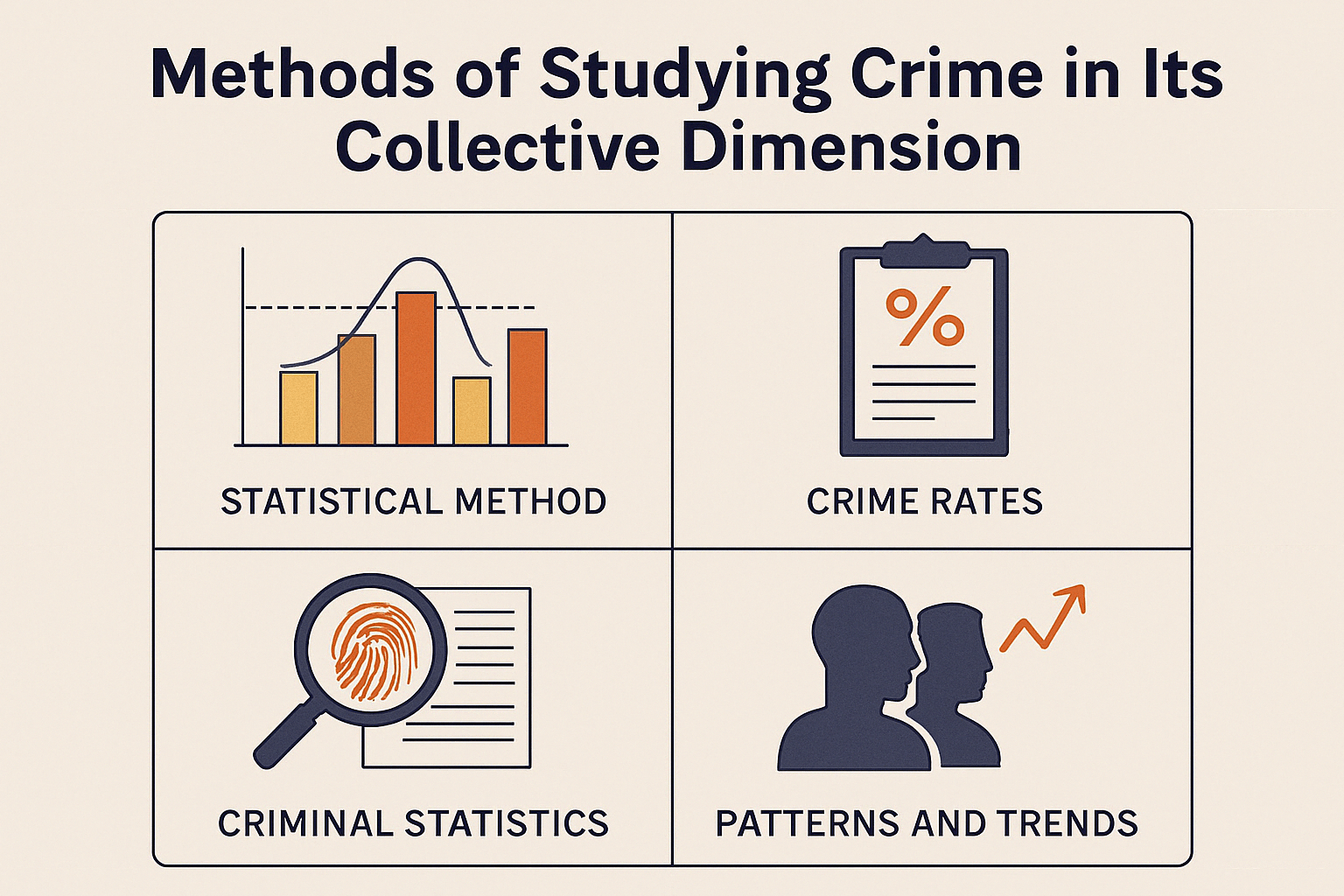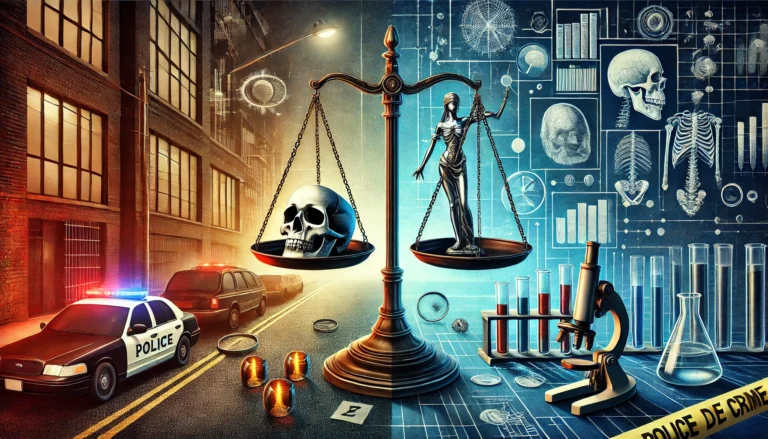Methods of Studying Crime in Its Collective Dimension: The Statistical Method and the Scientific Value of Criminal Statistics
Studying crime is an essential aspect of criminology, particularly when we consider crime in its collective or social dimension. The behavior of individuals within a society and how that behavior contributes to crime patterns on a larger scale can tell us a great deal about both the state of the justice system and the broader social environment. The study of crime has evolved significantly over the years, incorporating more scientific methods, one of the most powerful of which is the statistical method. This method not only allows criminologists to quantify and categorize crime data, but also provides insights that can guide public policy, law enforcement, and even social programs. The ability to study crime from a collective perspective is crucial for understanding trends, determining causes, and evaluating the effectiveness of criminal policies.
Statistical methods provide a concrete, measurable approach to understanding crime patterns, including how crime spreads across populations, regions, and time periods. The importance of these methods in criminology cannot be overstated as they offer the foundation for much of the research conducted in the field. This article will delve into the statistical methods used to study crime, focusing on their value in criminological research and their contribution to the creation and evaluation of criminal policies.
The Statistical Method: A Pillar in Studying Crime Collectively
Quantifying Crime as a Social Phenomenon
The statistical method is a key tool for studying crime on a large scale. By gathering data on criminal activities across various demographics and geographic areas, criminologists can gain a comprehensive view of crime as a social phenomenon. This is particularly important in the context of collective crime studies, where researchers are more concerned with understanding crime patterns and societal influences than with individual criminal acts.
Crime statistics provide valuable insights into how criminal behavior can vary based on factors such as age, gender, socioeconomic status, and geographical location. Moreover, crime rates may also fluctuate over time due to changes in society, such as economic conditions, shifts in cultural norms, or the effectiveness of law enforcement strategies. Statistical analysis allows criminologists to track these changes and identify potential links between crime and various social phenomena, thereby helping policymakers understand the causes of crime and its impact on society.
One of the most prominent uses of statistical methods in criminology is the mapping of crime. By utilizing crime data to create visual representations of criminal activities in different areas, criminologists and law enforcement agencies can identify patterns that inform strategic decision-making. These statistical tools help in understanding where crimes are most likely to occur, when they happen, and which areas may need more police presence or intervention.
Categories of Criminal Statistics
Studying crime using statistical methods involves breaking down crime data into specific categories. These categories help researchers and policymakers focus on various aspects of crime, ensuring that the data collected can be used effectively in the analysis of crime patterns. The most common categories of criminal statistics include:
- Reported Crime: This category encompasses crimes that have been officially recorded by law enforcement agencies. It serves as the foundation for most criminal statistics, providing a baseline measure of how much crime is happening within a given jurisdiction.
- Conviction Rates: Conviction rates measure the success or failure of the criminal justice system in prosecuting offenders. These statistics reveal the percentage of crimes that result in convictions and can be used to evaluate the fairness and efficiency of the legal system.
- Victimization Surveys: Victimization surveys are critical in understanding the “dark figure” of crime, referring to incidents that go unreported. These surveys offer insights into the personal experiences of victims and can provide more accurate data on the true extent of criminal activity in society.
- Self-Report Studies: Self-report studies collect data directly from offenders, providing a window into the motivations and behaviors of those who commit crimes. These studies are particularly valuable in understanding minor offenses or crimes that may go unnoticed by law enforcement.
By breaking down crime statistics into these categories, criminologists can more accurately assess the nature and extent of crime, compare trends across regions, and gain a deeper understanding of the dynamics of criminal behavior in different populations.
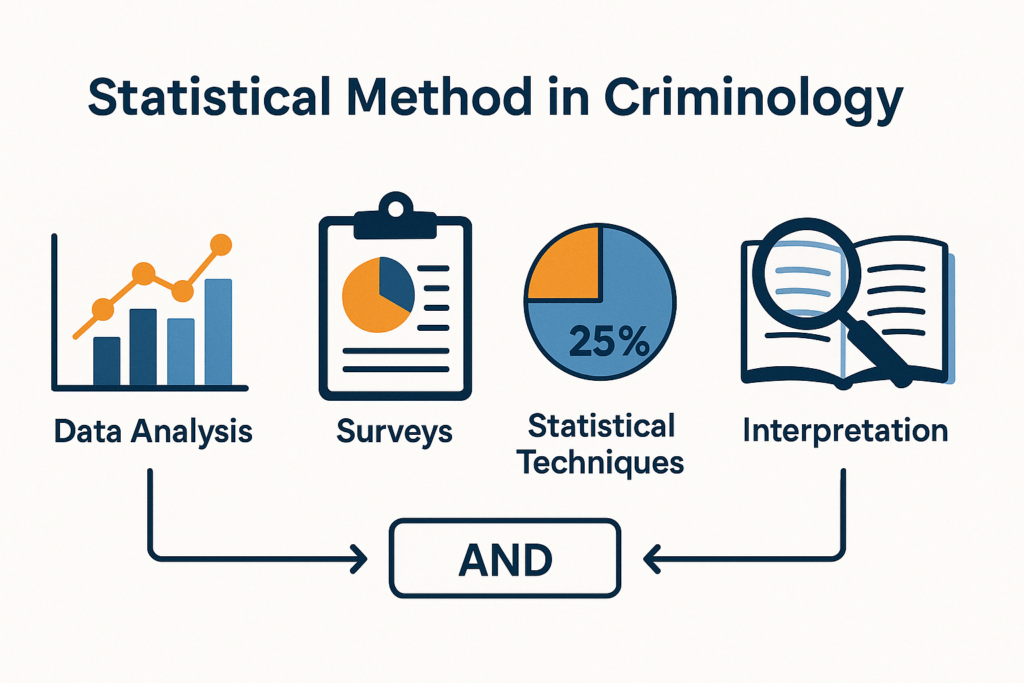
Tools and Techniques in Statistical Criminology
Studying crime through statistical methods requires specialized tools and techniques to collect, analyze, and interpret data. Modern criminologists utilize various statistical techniques to handle large datasets, uncover patterns, and make predictions. Some of the most common tools and methods used in statistical criminology include:
- Descriptive Statistics: This includes basic tools like averages, percentages, and frequency distributions that summarize crime data and provide a general overview of crime trends. Descriptive statistics are used to identify broad trends and make comparisons between different regions, time periods, or demographic groups.
- Inferential Statistics: Inferential statistics are used to analyze relationships between different variables. Techniques like regression analysis can help criminologists understand how different factors, such as poverty or education, influence crime rates. Inferential statistics also allow criminologists to make predictions about future crime trends based on historical data.
- Time-Series Analysis: Time-series analysis is used to examine how crime rates change over time. By analyzing long-term data, criminologists can identify trends and patterns, such as seasonal fluctuations in certain types of crime, and assess the impact of criminal justice policies.
- Geospatial Analysis: Geospatial analysis allows criminologists to map crime data and identify geographic patterns. By visualizing crime hotspots, criminologists can better understand the spatial distribution of criminal activity and help law enforcement agencies allocate resources more effectively.
With advancements in technology, criminologists now have access to more powerful tools and data than ever before. Software such as SPSS, R, and Python libraries like Pandas and Seaborn allow researchers to analyze large volumes of data and uncover complex relationships that would have been difficult to detect in the past. These tools have made statistical criminology a more empirical science, providing a stronger foundation for both research and practice.
The Scientific Value of Criminal Statistics
Enhancing Policy Formation
Criminal statistics play a pivotal role in the formation of effective criminal policies. By relying on objective, data-driven insights, policymakers can develop strategies that are more likely to succeed in reducing crime rates. This reliance on statistical evidence is a significant shift from the past when policy decisions were often based on political agendas, anecdotal evidence, or media coverage.
Statistical methods help identify patterns of criminal behavior that may not be apparent through qualitative research alone. For example, crime data might reveal that specific types of crimes, such as property crimes, are more prevalent in economically disadvantaged neighborhoods. Policymakers can use this information to implement targeted interventions, such as community policing, job training programs, or substance abuse rehabilitation, in areas most affected by crime.
By analyzing crime data over time, statistical methods also allow policymakers to evaluate the effectiveness of existing programs and interventions. This ability to track changes in crime rates and correlate them with specific policies enables continuous improvement in crime prevention strategies.
Measuring Policy Impact
One of the most critical applications of criminal statistics is the ability to measure the impact of policies and programs aimed at reducing crime. Without statistical data, it would be impossible to determine whether crime rates are actually decreasing or if policies are achieving their intended goals.
For example, if a new initiative aimed at reducing drug-related crime is implemented in a city, crime statistics can be used to track whether the initiative has led to a reduction in arrests or hospitalizations related to drug offenses. This allows policymakers to assess whether the program is working and make necessary adjustments. Comparative crime data from different jurisdictions or time periods can also be used to evaluate the success of various interventions.
Transparency in criminal statistics is essential for ensuring that the public, as well as lawmakers, can evaluate the effectiveness of crime policies objectively. Statistical analysis removes much of the bias that might come with subjective accounts, media portrayals, or politically motivated decisions.
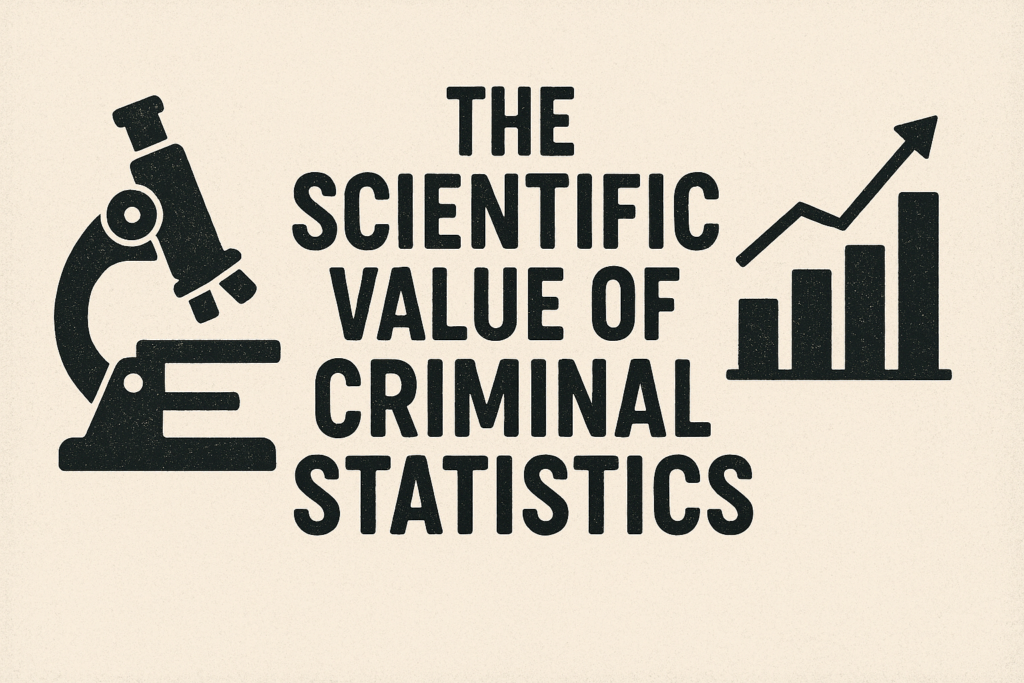
Promoting International Comparability
Criminal statistics also serve an essential role in promoting international comparisons. Organizations like the United Nations Office on Drugs and Crime (UNODC) collect and standardize crime data from around the world, enabling criminologists to make cross-cultural comparisons of crime rates and understand how different legal systems, economic conditions, and social structures influence crime.
International comparisons allow criminologists to identify global patterns in crime and gain a better understanding of the social, cultural, and economic factors that contribute to criminal behavior. For example, comparing crime rates in countries with high levels of social welfare with those in countries facing economic instability can reveal important insights into the relationship between poverty and crime. Such comparisons can also inform global efforts to combat transnational crimes such as human trafficking, cybercrime, and terrorism.
Challenges and Limitations of the Statistical Method
Despite its many benefits, the statistical method of studying crime does have limitations. It is important to recognize that not all crimes are accurately represented in crime statistics, and several factors can affect the reliability of the data collected.
Underreporting and Data Reliability
One of the most significant challenges in using crime statistics is the issue of underreporting. Many crimes go unreported for various reasons, such as victim fear, social stigma, or lack of trust in the criminal justice system. For example, victims of domestic violence may hesitate to report their abuse, and individuals involved in drug offenses may be reluctant to cooperate with law enforcement. As a result, official crime statistics may significantly underestimate the true extent of crime in a given area.
Another issue is the inconsistency of data collection methods across different jurisdictions. Variations in reporting practices, legal definitions of crime, and the resources available for data collection can lead to discrepancies in crime statistics. This makes it difficult to compare data across regions or countries without adjusting for these differences.
Overemphasis on Quantitative Data
Another potential limitation of the statistical method is the overreliance on quantitative data. While statistical analysis provides valuable insights into crime patterns, it often overlooks the qualitative aspects of crime that are difficult to measure. Factors such as socialization, mental health issues, and the psychological motives behind criminal behavior are often not captured in crime statistics.
To overcome this limitation, criminologists must integrate quantitative research with qualitative methods, such as case studies, interviews, and ethnographic research. This combination of approaches provides a more holistic understanding of crime and its underlying causes.
Conclusion
The statistical method is a powerful tool for studying crime in its collective dimension. By enabling criminologists to quantify and analyze crime patterns, statistics help in the formation of evidence-based criminal policies, measuring their impact, and fostering international comparisons. While challenges such as underreporting and the overemphasis on quantitative data exist, the benefits of statistical methods in criminology are undeniable. With continued advancements in data collection and analysis techniques, studying crime through statistical methods will remain an essential pillar of criminological research and policy development.
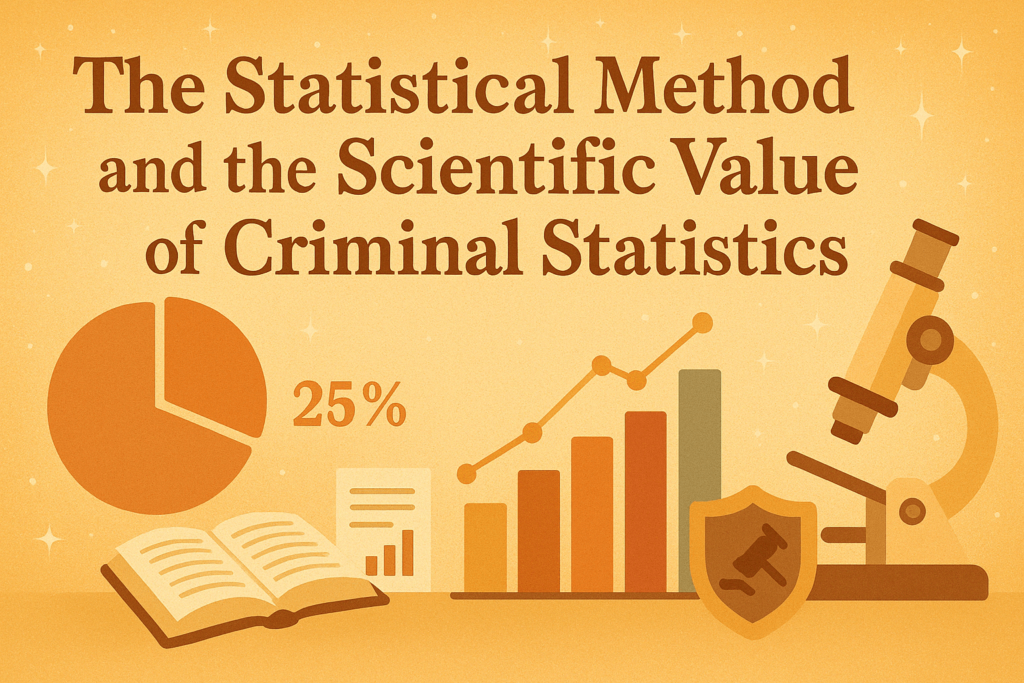
📚 References
- Gottfredson, M. R., & Hirschi, T. (1990). A general theory of crime. Stanford University Press.
- Lynch, J. P., & Addington, L. A. (2007). Understanding crime statistics: Revisiting the divergence of the NCVS and UCR. Cambridge University Press.
- Maguire, M., Morgan, R., & Reiner, R. (Eds.). (2012). The Oxford handbook of criminology (5th ed.). Oxford University Press.
- Siegel, L. J. (2018). Criminology: The core (6th ed.). Cengage Learning.
- Tonry, M. (2019). The Oxford handbook of crime and criminal justice. Oxford University Press.
- United Nations Office on Drugs and Crime. (2019). Global study on homicide. https://www.unodc.org/unodc/en/data-and-analysis/global-study-on-homicide.html
- Bureau of Justice Statistics. (2023). Criminal victimization reports. https://bjs.ojp.gov/data

